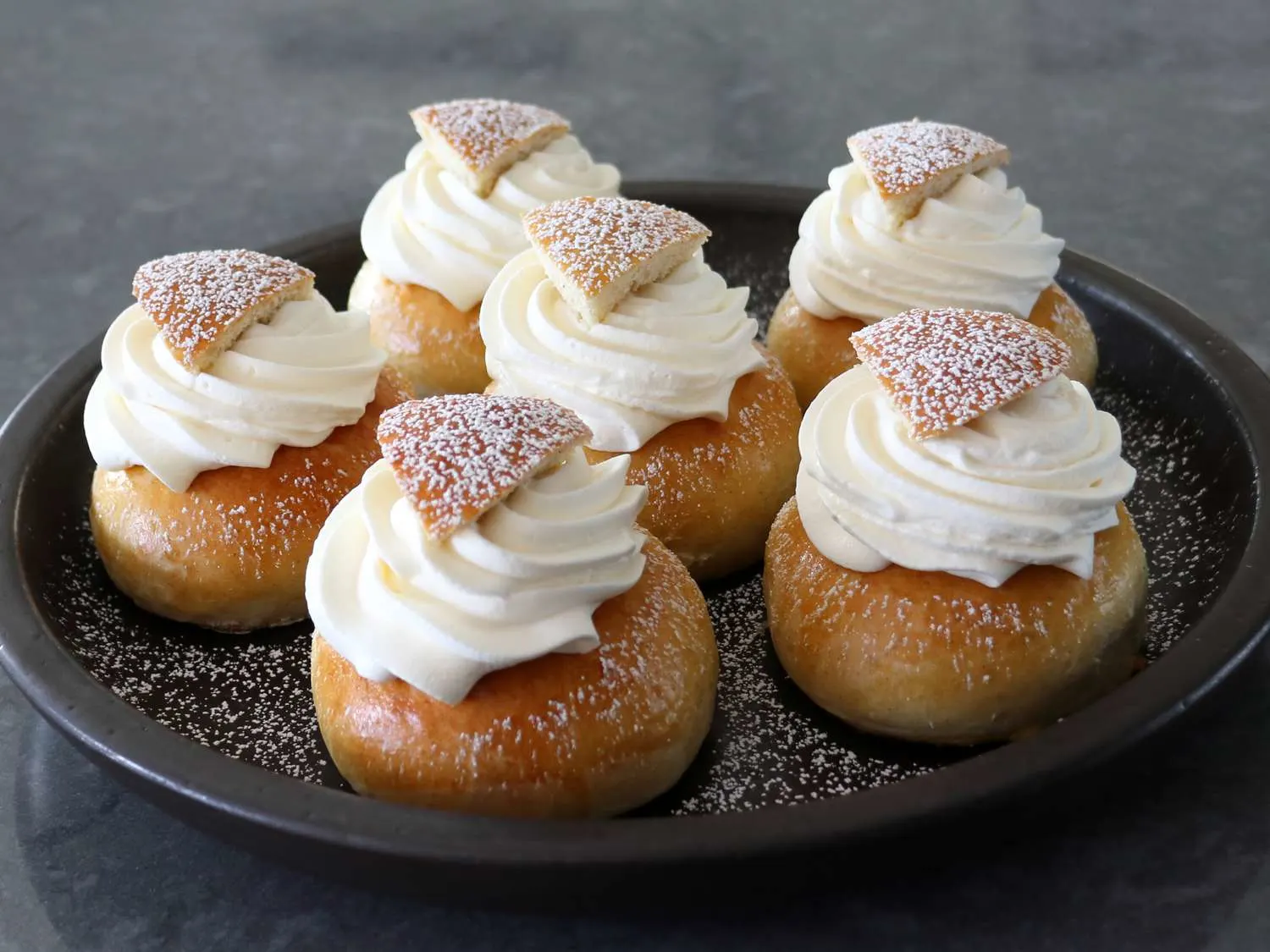
Semla
Cardamom-spiced wheat buns filled with almond paste and whipped cream, traditionally eaten before Lent.
Ingredients
- •Wheat flour
- •Cardamom
- •Milk
- •Yeast
- •Butter
- •Sugar
- •Egg
- •Almond paste
- •Whipped cream
Instructions
Make Dough
Mix and knead cardamom-spiced dough
Bake
Shape buns and bake until golden
Prepare Filling
Make almond paste filling
Assemble
Cut, fill with almond paste and cream
Semla (also known as fastlagsbulle or semlor in plural) is a beloved Swedish pastry consisting of a light, cardamom-spiced wheat bun filled with almond paste and topped with whipped cream. The bun is cut horizontally, and the top serves as a decorative lid dusted with powdered sugar. The combination of aromatic cardamom, sweet almond filling, and rich cream creates an irresistible treat that's deeply woven into Swedish culinary tradition.
Historically, semla was eaten on Shrove Tuesday (Fettisdagen) as a final feast before the start of Lent. The tradition dates back to the 1700s, when the bun was served in a bowl of warm milk, known as "hetvägg." Today, semlor appears in bakeries as early as January and remains available through Easter, with some establishments offering them year-round due to popular demand. The most famous semla-related story involves King Adolf Frederick of Sweden, who allegedly died in 1771 after consuming 14 servings of semla in hot milk!
Creating the perfect semla requires attention to detail. The dough must be enriched with butter and cardamom, then allowed to rise until light and fluffy. After baking, the buns should be golden brown and aromatic. The traditional filling combines ground almonds with milk or cream to create a smooth paste, though modern variations might use ready-made almond paste. The whipped cream should be stable enough to hold its shape but not over-whipped, creating a luxurious filling that complements the almond paste.
While the classic recipe remains the most popular, creative bakers have developed interesting variations. Some add chocolate, vanilla, or different nuts to the filling. Others experiment with the format, creating semla-inspired cakes, milkshakes, or even wraps. In recent years, some bakeries have introduced vegan versions using plant-based cream and dairy-free dough, making this beloved treat accessible to more people.
In Sweden, semla is typically enjoyed during fika (coffee break) with a cup of coffee or tea. Some still serve it the traditional way in a bowl of warm milk, though most prefer it as is. Many Swedes have strong opinions about the perfect semla, debating everything from the ideal cream-to-almond-paste ratio to whether the lid should sit atop the cream or be partially buried in it.
As delicious as semla is, it's definitely an indulgent treat. A single bun can contain 300-400 calories, primarily from the cream, almond paste, and wheat bun. The pastry contains several common allergens including gluten, dairy, eggs, and almonds. Those watching their sugar intake should be mindful, as semla is quite sweet. However, for most Swedes, this seasonal treat is worth the splurge, especially when enjoyed as part of the traditional Shrove Tuesday celebration.
